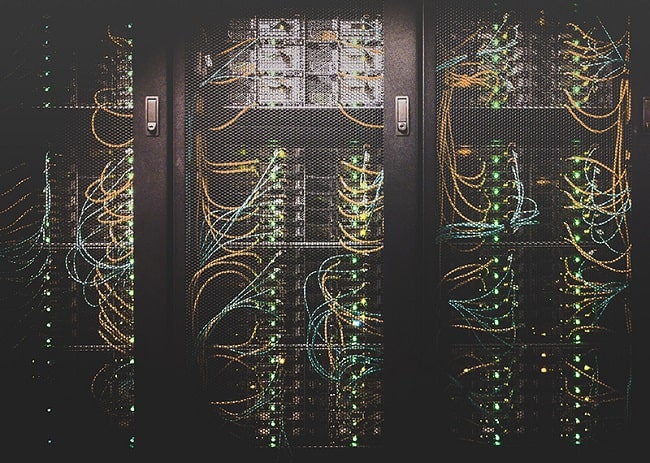Network Types
Networking of PCs has been developed for all levels, from local to international, in diverse sectors of society. Examples are networks used by government organizations for rapid retrieval of information from database at central locations. Natworks are used by banks and retail merchants for the transfer of funds or credit verification. PCs used corporate offices to get information of activities at its branch offices,etc. The following are the types of computer networks:
LAN:
A LAN connects network devices over a relatively short distance. A networked office building, school, or home usually contains a single LAN, though sometimes one building will contain a few small LANs (perhaps one per room), and occasionally a LAN will span a group of nearby buildings. In TCP/IP networking, a LAN is often but not always implemented as a single IP subnet. In addition to operating in a limited space, LANs are also typically owned, controlled, and managed by a single person or organization.
| Network Type | Technology | Range | Speed |
|---|---|---|---|
| Local Area Network (LAN) | Ethernet, Wi-Fi | Within a building or campus | 10 Mbps to 10 Gbps |
WAN:
As the term implies, a WAN spans a large physical distance. The Internet is the largest WAN, spanning the Earth. A WAN is a geographically-dispersed collection of LANs. A network device called a router connects LANs to a WAN. In IP networking, the router maintains both a LAN address and a WAN address.
| Network Type | Technology | Range | Speed |
|---|---|---|---|
| Wide Area Network (WAN) | Fiber optics, Satellite, Microwave | Across cities, countries, or continents | 1 Kbps to 100 Gbps |
WLAN:
WLAN uses wireless technology such as Wi-Fi to connect devices within a limited area, removing the need for physical cables. It's commonly used in homes, cafes, airports, and offices.
| Network Type | Technology | Range | Speed |
|---|---|---|---|
| Wireless Local Area Network (WLAN) | Wi-Fi | Within a limited area | Up to 1 Gbps (Wi-Fi 6) |
MAN:
MAN is a larger area than that of a LAN and smaller area as compared to WAN. It connects two or more computers that are apart but resides in the same or different cities. It covers a large geographical area and may serve as an ISP (Internet Service Provider). MAN is designed for customers who need a high-speed connectivity. Speeds of MAN ranges in terms of Mbps. This network hard to design and maintain.
| Network Type | Technology | Range | Speed |
|---|---|---|---|
| Metropolitan Area Network (MAN) | Fiber optics, Wireless | City or metropolitan area | 1 Mbps to 1 Gbps |
PAN:
PAN is the smallest type of network, typically connecting devices within the personal space of an individual, like smartphones, tablets, and wearable devices.
| Network Type | Technology | Range | Speed |
|---|---|---|---|
| Personal Area Network (PAN) | Bluetooth, Zigbee | Personal space of an individual | Up to 1 Mbps |
VAN:
VAN is a communication channel leased from a telephone company to offer customers with modems access to network services through a local or toll-free number.
| Network Type | Technology | Range | Speed |
|---|---|---|---|
| Value-Added Network (VAN) | Various | Across specific industries | Varies based on application |
CAN:
CAN is the computers are within a limited geographic area, such as a campus or military base. You can referring to "CAN" as "Campus Area Network" too, that's also a valid use of the term.
| Network Type | Technology | Range | Speed |
|---|---|---|---|
| Controller Area Network (CAN) | CAN bus | Within vehicles | Up to 1 Mbps |
HAN:
HAN is a network contained within a user's home that connects a person's digital devices, such as smart appliances, computers, and entertainment systems.
| Network Type | Technology | Range | Speed |
|---|---|---|---|
| Home Area Network (HAN) | Powerline, Wi-Fi, Zigbee | Within a household | Varies based on technology |
P2P:
In a P2P network, devices communicate directly with each other without the need for a centralized server. This type of network is often used for file sharing, collaboration, and distributed computing.
| Network Type | Technology | Range | Speed |
|---|---|---|---|
| Peer-to-Peer Network (P2P) | Ethernet, Wi-Fi | Within a limited area | Varies based on devices |
VPN:
VPN extends a private network across a public network like the Internet, allowing users to securely access resources as if they were directly connected to the private network. It's commonly used for remote access and to enhance privacy and security.
| Network Type | Technology | Range | Speed |
|---|---|---|---|
| Virtual Private Network (VPN) | Internet | Across the Internet | Varies based on Internet speed |
Other Network Types:
- EPN (Enterprise Private Network)
- POLAN (Passive Optical Local Area Network)
- SAN (System Area Network/Storage Area Network)
Note: These are just a few examples, and there are many other specialized types of networks tailored for specific purposes, such as storage area networks (SANs), campus networks, and content delivery networks (CDNs).
Category: Networking
on: 28 Jan 2019
on: 14 Apr 2024
Featured posts
You may like these posts.
OSI Model - Layers, Features, Merits & Demerits:
ISO stands for International organization of Standardization. This is called a model for Open System Interconnection (OSI) and is commonly known as OSI model.

Types of Networks - LAN, WAN, MAN, VAN etc:
Networking of PCs has been developed for all levels, from local to international, in diverse sectors of society, Example, networks used by government, etc.

Transmission Modes - Simplex, Half-duplex, Full-duplex:
Transmission mode refers to the mechanism of transferring data between two devices connected over a network basically this process called Communication Mode.
What's Next?
We've now entered the finance section on this platform, where you can enhance your financial literacy.